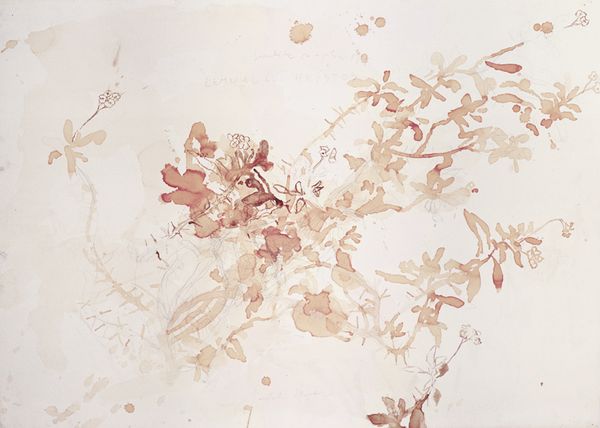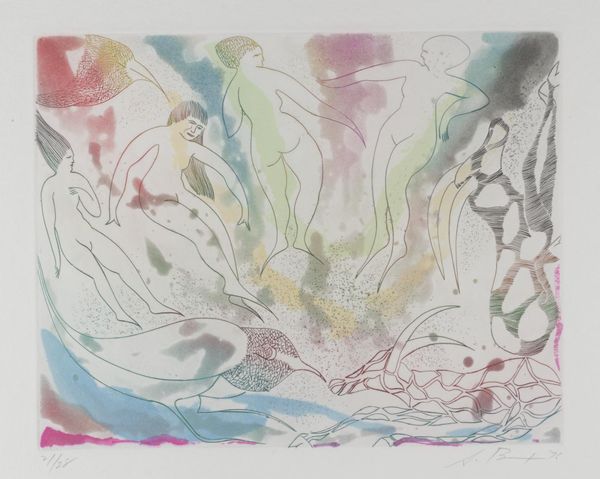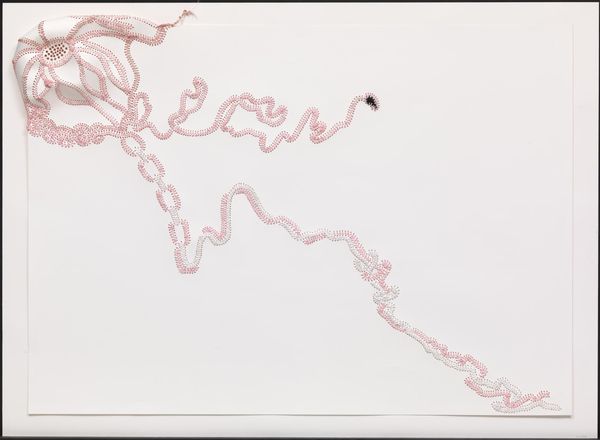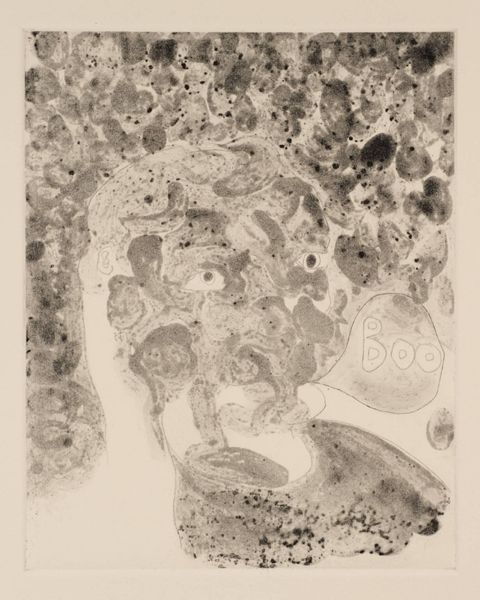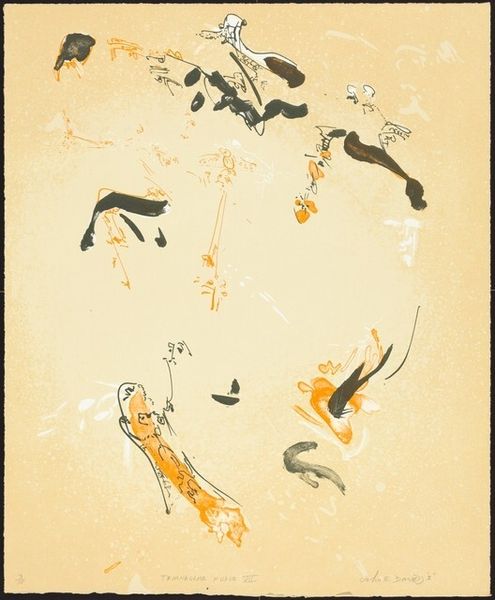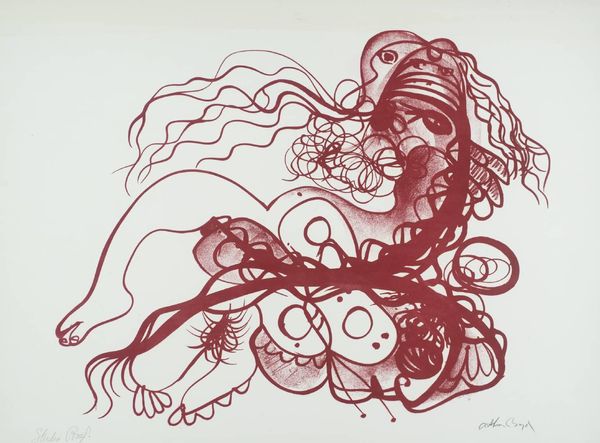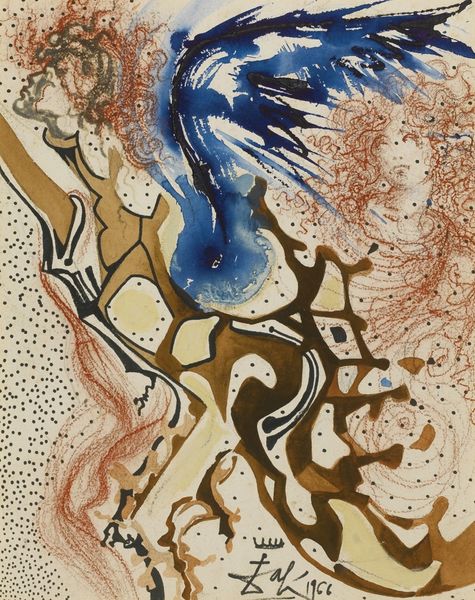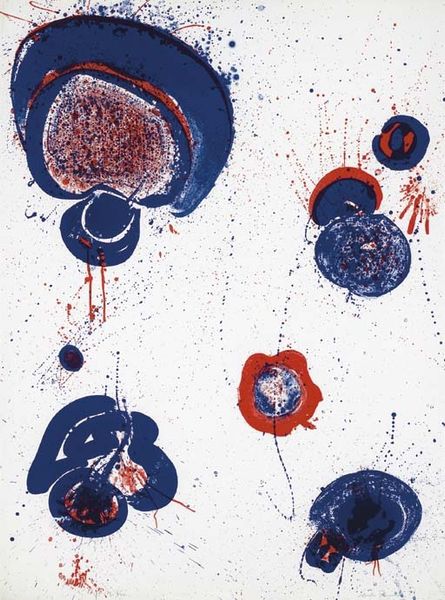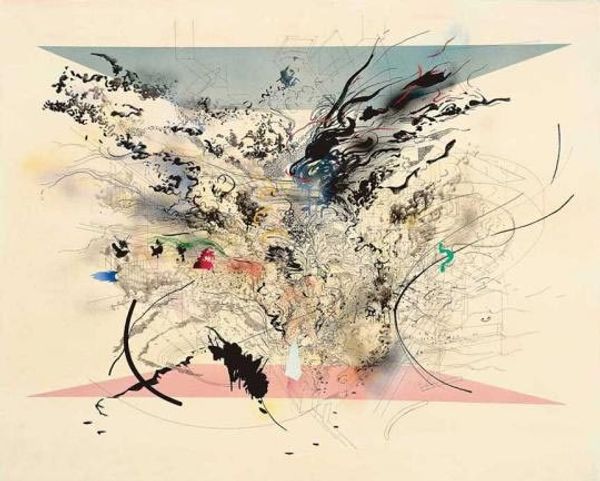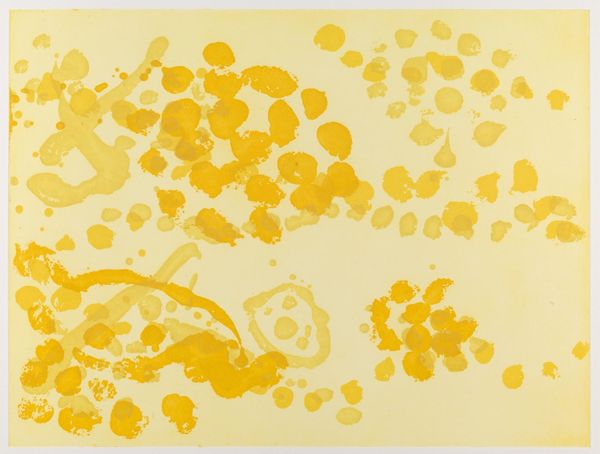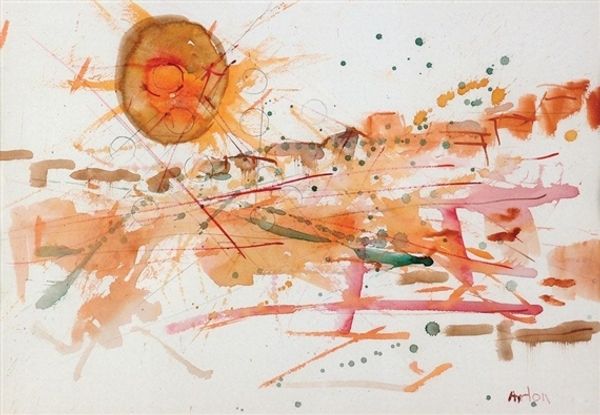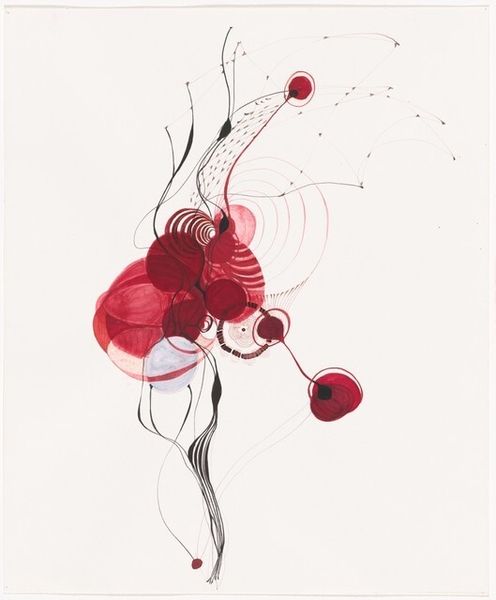
Dimensions: support: 770 x 1050 mm
Copyright: © Nicholas Hlobo, courtesy Stevenson Gallery, Cape Town | CC-BY-NC-ND 4.0 DEED, Photo: Tate
Curator: This is Nicholas Hlobo's "Macaleni Iintozomlambo," a work held in the Tate Collections. Editor: My first impression is of something incredibly delicate and organic, like coral or the branching of veins. Curator: Hlobo often uses materials like ribbon and rubber to evoke themes of identity and sexuality in post-apartheid South Africa. What do you see of that here? Editor: Well, the stitching suggests careful construction, a deliberate joining—perhaps speaking to the complexities of building a new social fabric. The river, which translates from the Xhosa in the title, is a classic symbol of transformation and flow. Curator: Indeed. I'm struck by the ambiguity of the imagery, allowing multiple interpretations across personal and collective narratives. Editor: It makes me wonder about the role of craft in contemporary art, how traditional skills can speak to modern concerns. Curator: It's a reminder that symbols carry different weights for different people. Editor: Ultimately, it sparks a conversation about the stories we tell ourselves, doesn't it?
Comments
tate 6 months ago
⋮
http://www.tate.org.uk/art/artworks/hlobo-macaleni-iintozomlambo-t13242
Join the conversation
Join millions of artists and users on Artera today and experience the ultimate creative platform.
tate 6 months ago
⋮
In Macaleni iintozomlambo 2010 a tea stain on white watercolour paper forms the basis for the drawing. Meandering tentacles of pale brown are emphasised by intense orange and red stitches and further defined and textured by pale coloured ribbon sutures around the tea stain. The shape resembles an underwater creature, with several of the stitched lines ending abruptly, like stunted limbs. The sexual connotations of the forms, fleshy tones and slippery surfaces found in this work are confirmed by its title. Macaleni iintozomlambo refers to a traditional Xhosa belief whereby boys would throw rocks into the river before diving in naked as a sign of respect towards the river, and in order to acknowledge that they are visitors in a space that is not their own. Hlobo has cut and sewn the paper together with his signature ‘baseball’ stitch, which is not just decorative, but also very strong. The cuts in the paper are sharp and clean, determining where the ribbon sutures will be made and how they will overlap. Hlobo always titles his works in Xhosa, an Nguni language widely spoken in South Africa. Attracted to the formal qualities of the grammar, the sounds of the words, and the linguistic flexibility of Xhosa, Hlobo’s use of the language, with all its poetic idioms, proverbs, and double entendres, is as much about defining himself as it is an effort to convey difficult truths and encourage dialogue around homosexuality, male circumcision and other culturally sensitive issues.
